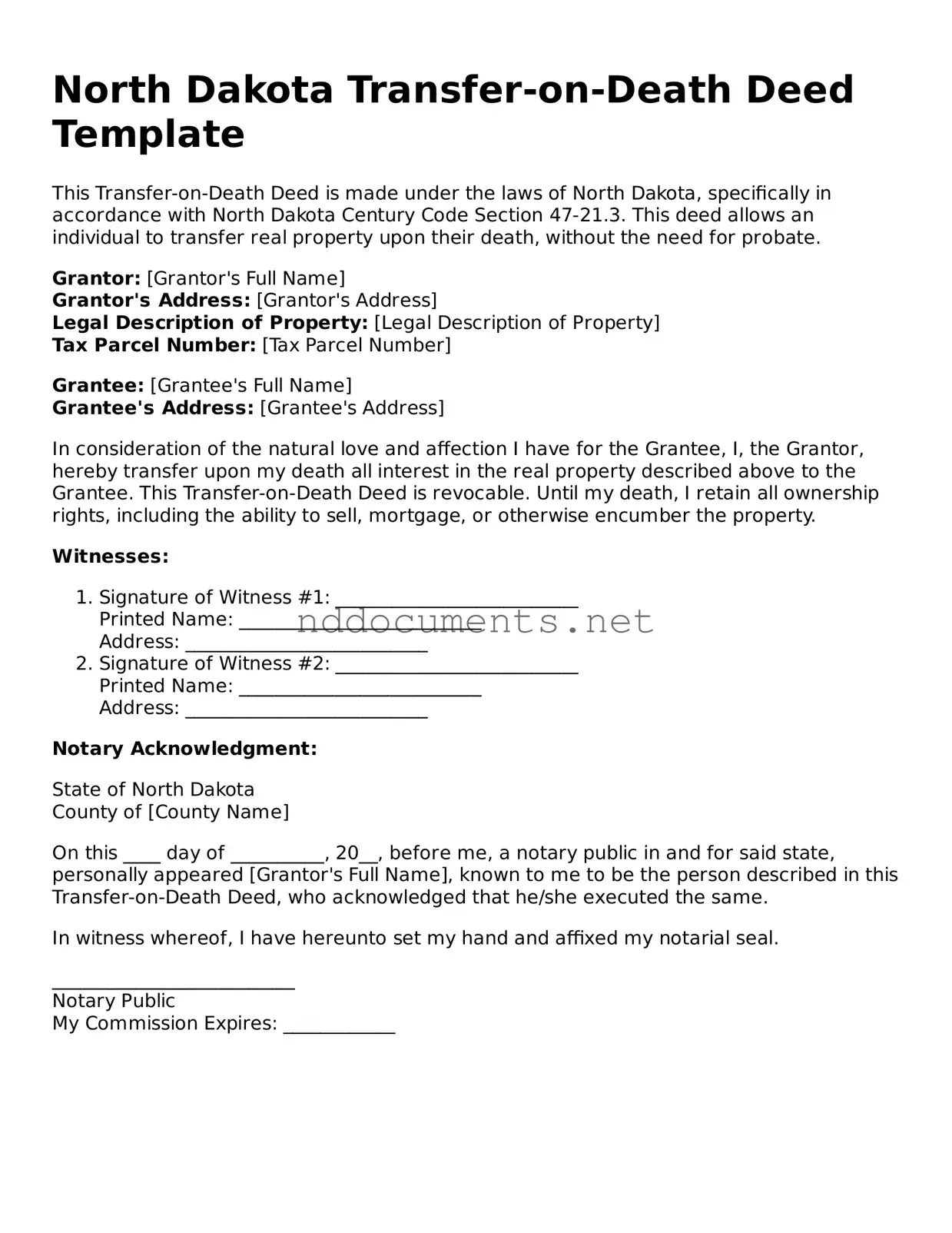The North Dakota Transfer-on-Death Deed form serves as a vital estate planning tool, allowing individuals to transfer real property to designated beneficiaries upon their death without the need for probate. This form provides a straightforward mechanism for property owners to ensure their assets are passed on according to their wishes, while also simplifying the transfer process for heirs. By utilizing this deed, property owners can retain full control over their property during their lifetime, as the transfer only becomes effective upon their passing. Additionally, this form is designed to be revocable, meaning that individuals can alter or revoke the deed at any time prior to their death, offering flexibility in estate planning. It is important for property owners to understand the specific requirements for executing this deed, including the necessity for proper signatures and notarization, to ensure that the transfer is legally binding and recognized by the state. In North Dakota, this form can be a valuable component of a comprehensive estate plan, providing peace of mind that one’s property will be handled according to their intentions after their death.
